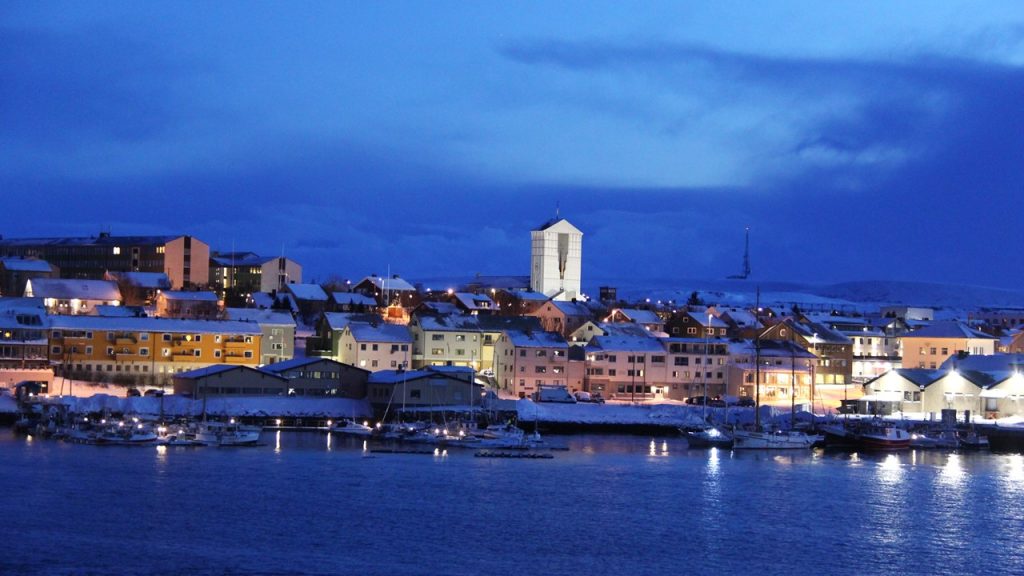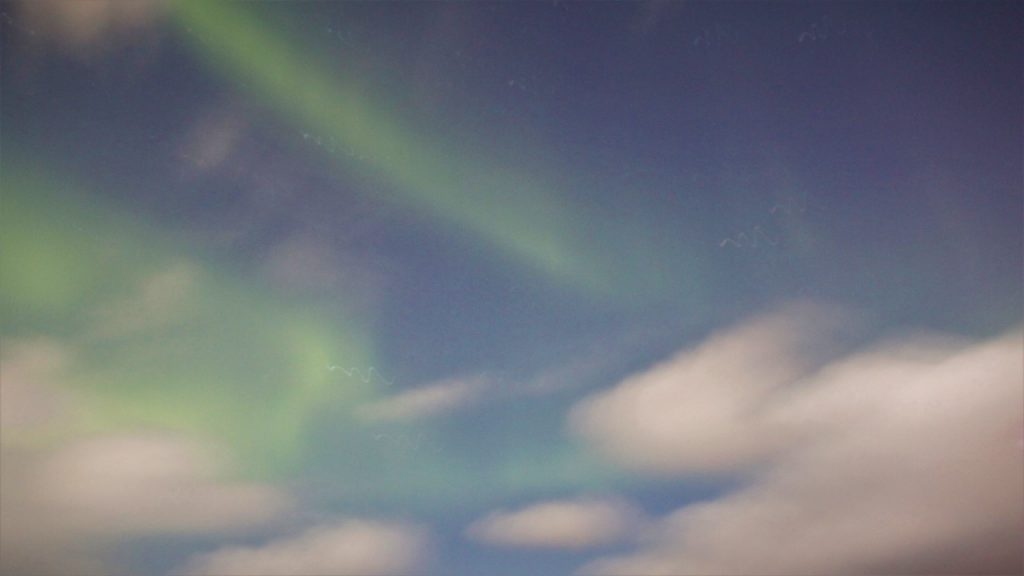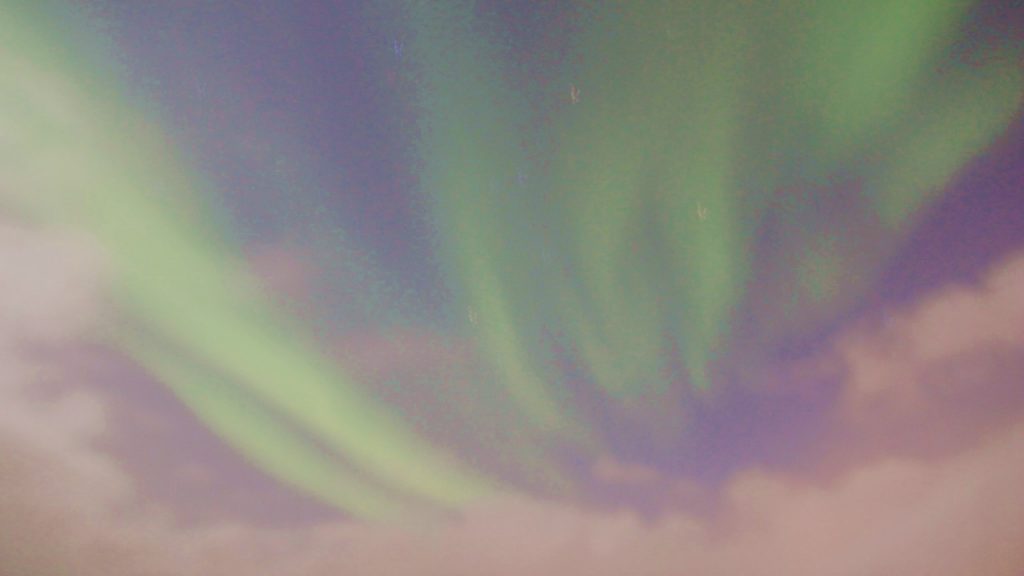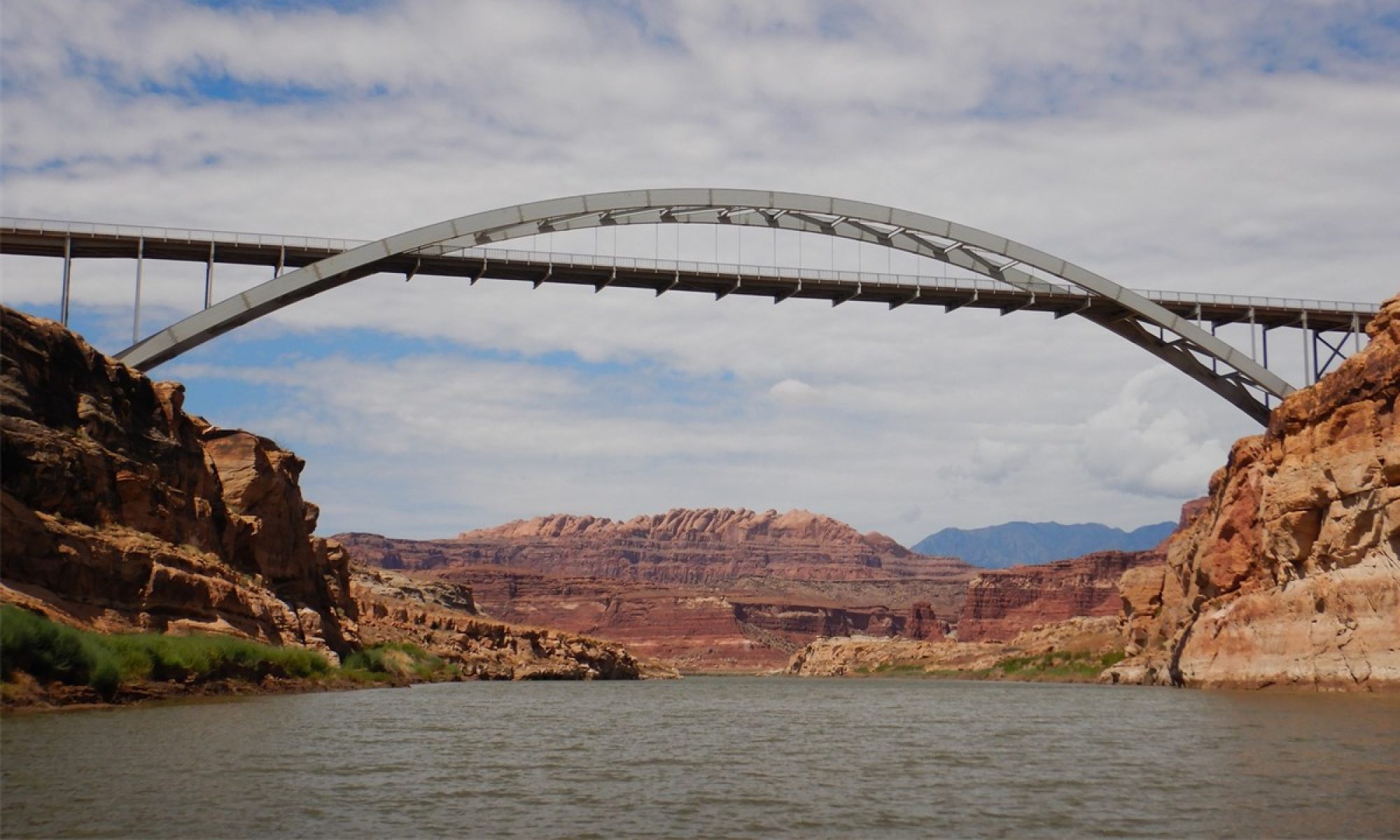Part 2 February 2020
The next morning, we rise early to catch a view of the globe monument that indicates that we are crossing the Arctic Circle – the border with the” Land of the Midnight Sun”. Daylight has only recently returned to this region, and our sun is in the sky here only ~4 hours. The night has seen us experience some larger waves, and we have already had 4 short stops to unload cargo and take on passengers in the night. The Norwegians are planning a “shortcut” to our route by building a ship tunnel 75’ wide and 40’ deep that is 15 miles long under a mountain, (The Laerdal Tunnel), to be finished in 2028. After we cross the Arctic Circle, we voluntarily celebrate the “crossing” on the ship’s back deck with a toast of champagne and a “polar baptism” – the ladling of ice and ice water down one’s back followed by a shot of aquavit, all presided over by the norse god of the sea – Njord! After lunch, we docked in the city of Bodo (pronounced like budha) where we take a quick walk about in the 25 degree F weather to look at the modern, post-war Bodo Cathedral, (built in 1956), and stop into a local bar, (The Nortlaenningen Pub – which was located two stories underground), and where we all enjoyed a local beer and a little warmth. The town was founded in 1816 and only became accessible by road shortly before WWII. During the German invasion in April 1940, over 2/3’s of the buildings and homes were destroyed. Upon completing our drinks and enjoying the local hospitality, it was back to the ship (with a shortcut through the town’s indoor shopping mall), and a hot dinner with friends and family. That evening we stop and take a brief walk around the harbor of Svolvaer in the Lofoten Islands. Svolvar has the distinction of being the warmest town in the world given its degree of latitude – averaging over 35 degrees F in January & February and is home to racks of drying cod along the port’s entry!
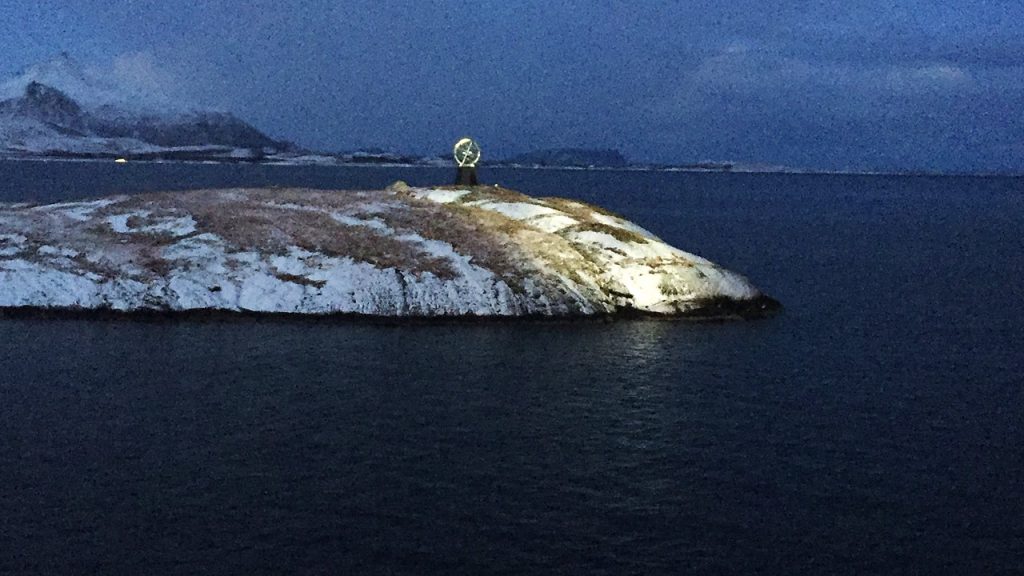
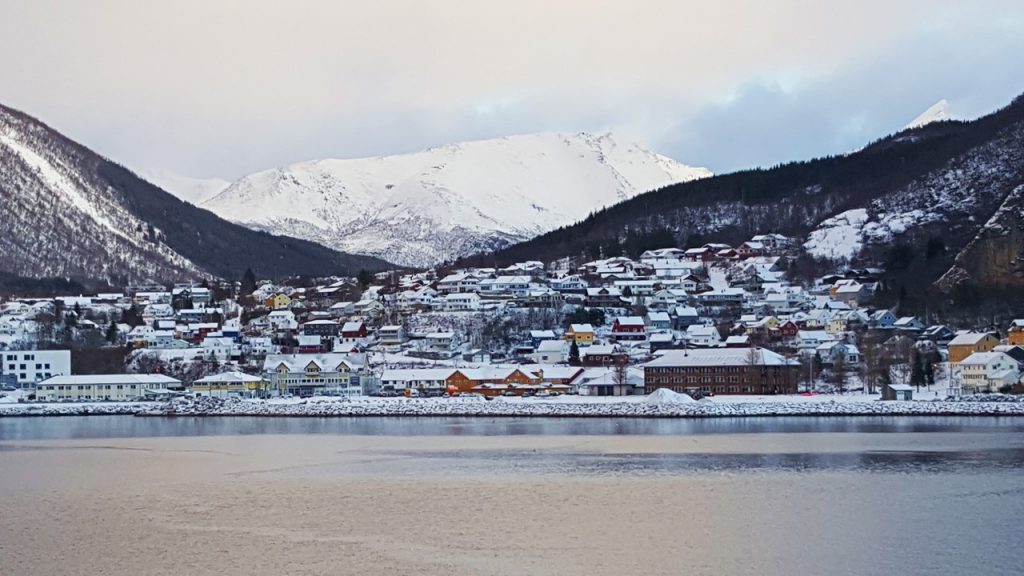
After five more stops in the night, and we arrive in Harstad early on Tuesday morning. Harstad is known for its cod and herring fishing, and for its annual cultural festival. We don’t have much time at the dock there, but we take notes and pictures for our Norwegian friends back in the States. Then we leave and make our way to the city of Tromso , the city known as “the Gateway to the Arctic” and the “Paris of the North”. Nearly every important Polar Expedition has been tied to this city, including those of Fritiof Nansen and Roald Amundsen, and the city houses the most northern University in the world. Here we split our forces, with Julie taking the afternoon city tour, and Rocky taking an excursion to go dogsledding. As the tours begin, darkness set in and heavy snows began to fall. Julie’s city tour visits the University Museum where one can create “Northern Lights” in a laboratory and with exhibits on the Sami culture and the traditions of trapping, hunting and fishing. Then it was on to the Polar Museum to learn of the exploits of the polar explorers and the history of Svalbard Island – home to the world’s largest population of Polar Bears and Walruses. Tromso is also home to the Mack Brewery which is famous for its Arctic Ale. Meanwhile, Rocky’s dogsledding adventure took him by bus to a camp where a champion professional woman dogsledder houses over 300 sled-dogs and offers 1-hour sledding adventures. We were divided into 3 groups of 12 people each, and then loaded as the first group, 2-people-per-sled. The other two 12-person groups would tour the kennels and enjoy hot drinks in the camp’s accommodations while we sledded, and the plan was to then rotate after each ~1-hour. However, while sledding through the snow with the first group, the weather degraded significantly, and the second group’s sledding was cut short and the third group’s sledding was cancelled altogether. In fact, the weather got so bad, we had to immediately board buses to insure we could make it back to the ship. However, the hour that Rocky had sledding was great fun, and the musher was a young lady from Austria who was building her personal experience. After arriving back at the ship, we set sail in a snowstorm and went to eat dinner. That night, we were treated to a magnificent show of the Northern Lights. We stood on the back deck as the skies cleared and the green electromagnetic show began. Although capturable on camera, the boat’s motion made it difficult to get extremely sharp photos. But the aerial show was spectacular! Unfortunately, by the time we arrived in Skjervoy, the city lights and growing cloud cover ended our show for the night.
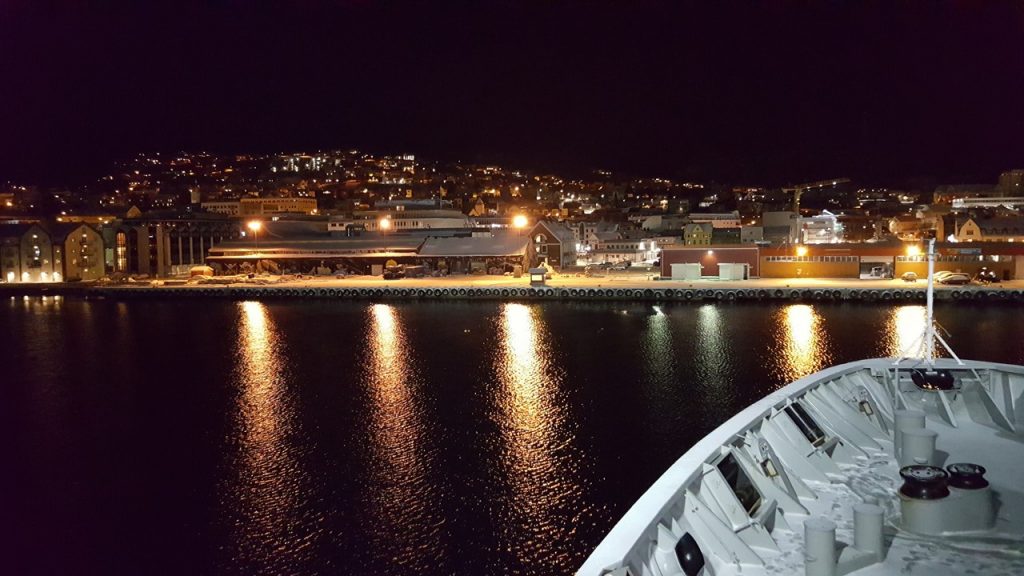
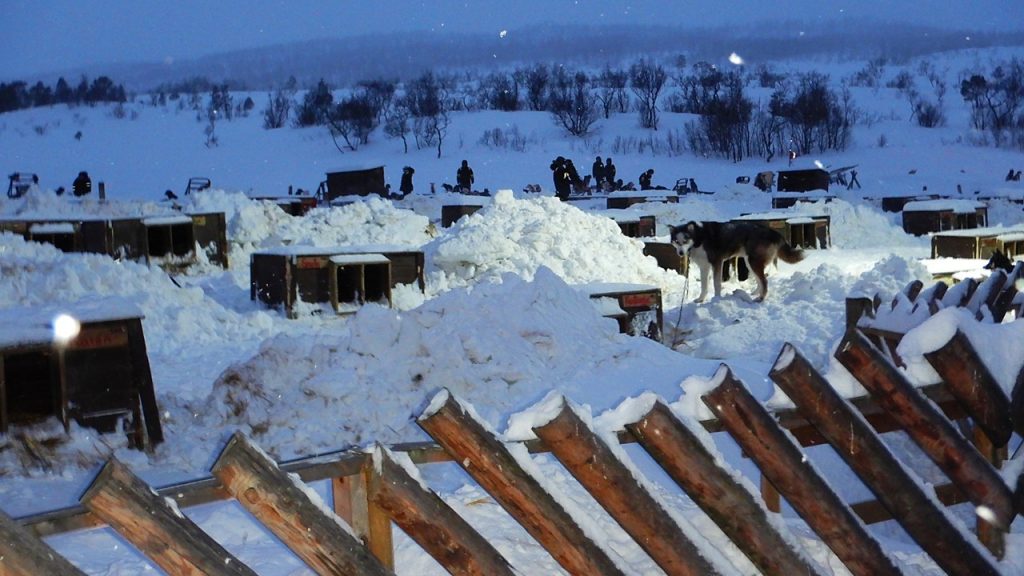
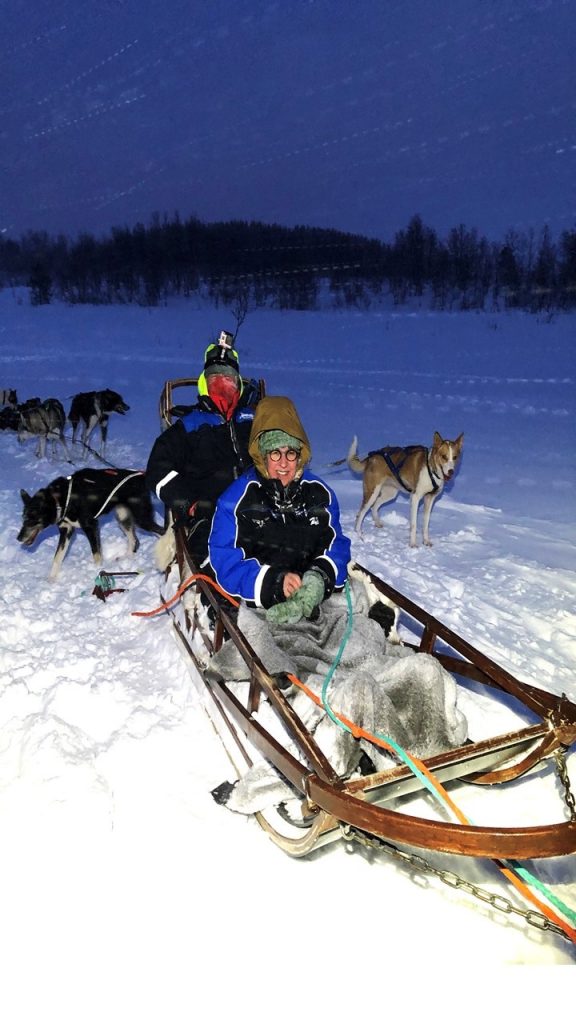
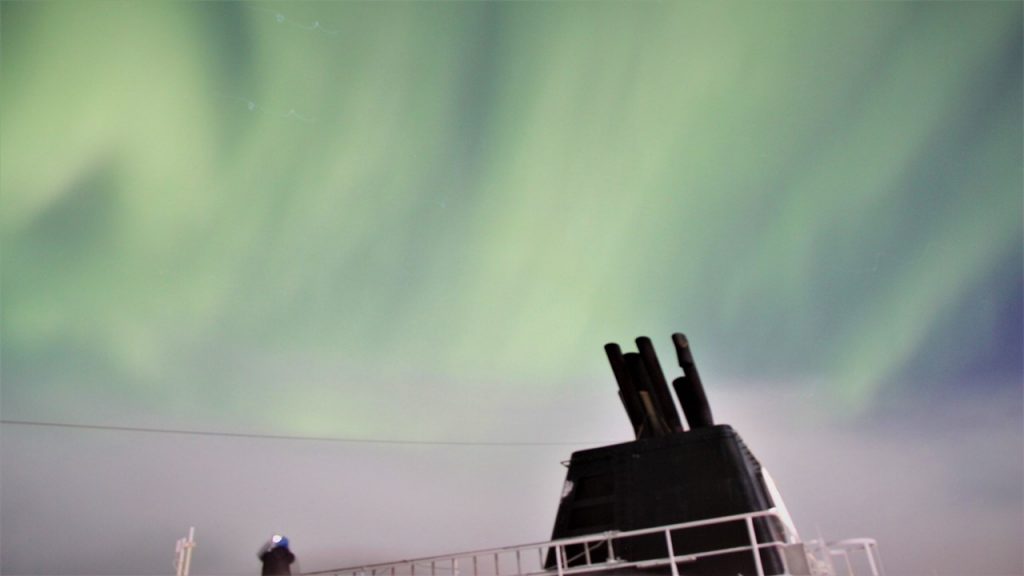

We wake on Wednesday morning with 4 new inches of snow covering the ship’s decks and icicles hanging down from the ship’s windows. The daylight is getting shorter as we travel north, and it is a “blue morning” with snow, sky and water all reflecting blue. We dock in the town of Honningsvag – the capital of the “North Cape” and home to 2800 sturdy inhabitants. Every Spring, the Norwegian Army helps transport 3,800 reindeer over the Mageroy Strait to their summer pastures on Mageroy Island, and every Autumn, the Sami herd them back to the wintering plains of Karasjok with an 1800-meter swim back. The town’s church, built in 1884, was the only building left standing after the town was razed near the end of WWII. Today the town serves as one of the northernmost cities in the world, and the gateway to the North Cape, the most northern point of any continent on earth. After a brief sightseeing excursion, we head back to the ship to round the Cape through rough wind and waves to arrive in Berlevag at 10pm, a difficult port to dock in, and the home of up to 10-meter waves directly out of the Arctic North. Today, ships can more safely access this port due to the extensive network of 15-ton concrete blocks that were set in place in 1973. Here, Julie was supposed to have joined a snowmobile excursion to travel between coastal towns, but the weather was so bad that the snowmobile excursion was cancelled. However, she was given the opportunity to try again later on the return trip back down the coast.

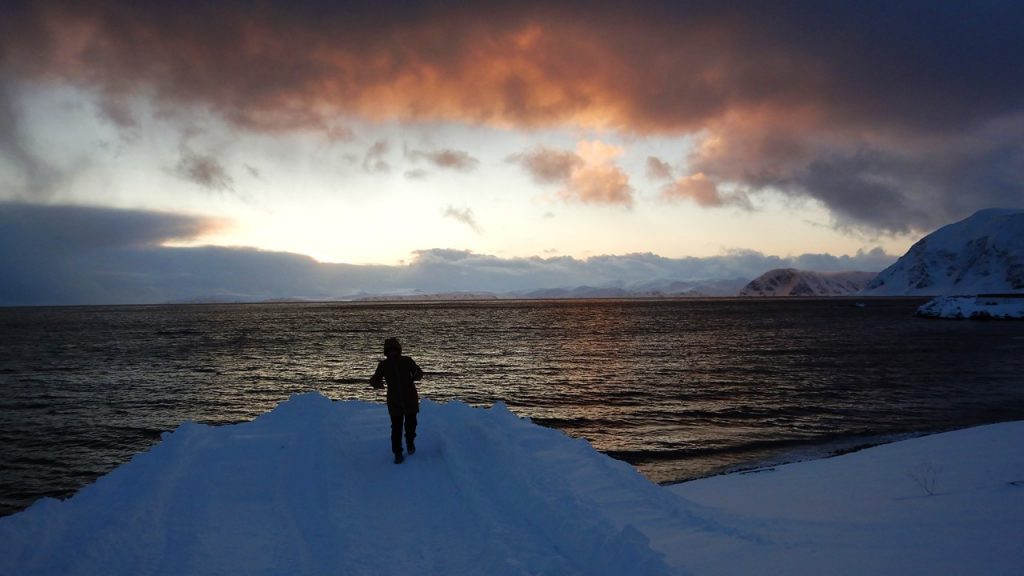
After delivering cargo in Berlevag, we begin the difficult travel back south but further to the east to Vardo, the eastern-most point in Norway, located further east than Istanbul or St. Petersburg, and connected to the mainland via a 2900-meter tunnel. Then we are on to Kirkenes (pronounced “chur ken knees”), the heart of “border country” located at the mouth of the Pasvikelva River which forms part of the border with Russia. Here we have time to explore and to take a bus excursion inland to the surrounding area and the Russian Border. Kirkenes grew up around an iron ore mining company which was a critically sought-after resource before, during and immediately after WWII. Today, the mines are idle, and the town survives on fishing, tourism and trade with Russia. During WWII, Kirkenes served as a key base for raids against the Soviets’ ice-free port of Murmansk by the Germans, and as a result, suffered 328 Soviet bombing air-raids before the Nazi’s retreated. Our bus takes us on a brief overview of the town before heading 15km to Storskog – the only official border crossing between Norway and Russia. The town has always had a vibrant but uncomfortable relationship with their neighbors to the east, but certainly better now since the “Cold War” has ended. At the border is a Sami local who runs a little souvenir shop and has a wonderful Malamute (named Bamse), that everyone wanted to pet. This part of “Finmark” which extends across the northern portions of Norway, Sweden, Finland and Russia is dominated by the Sami people. 10-15% of the Sami are still traditional reindeer herders, but the majority survive today on fishing. The reindeer are used for food, pelts, and even milk, and the antlers are even ground for medicine. After the visit to the border, we are off to the famous “Snow Hotel” – an annual seasonally-created lodge constructed from snow canons piling snow over a removable form, and then decorated by ice carvers using large ice-blocks taken from the nearby frozen lake. The hotel has 14 “snow” rooms with a reception center, and 20 additional cabins located nearby. The beds are ice and the rooms go for ~$300/night with the bathrooms located separately. The Hotel also houses a few reindeer which we get to feed, (reindeer eat lichens), and additionally have their own dog-sledding area housing ~100 dogs which we get to greet and pet. After the visit, we head back to the ship for lunch and to turn around and begin the cruise back to Bergen.

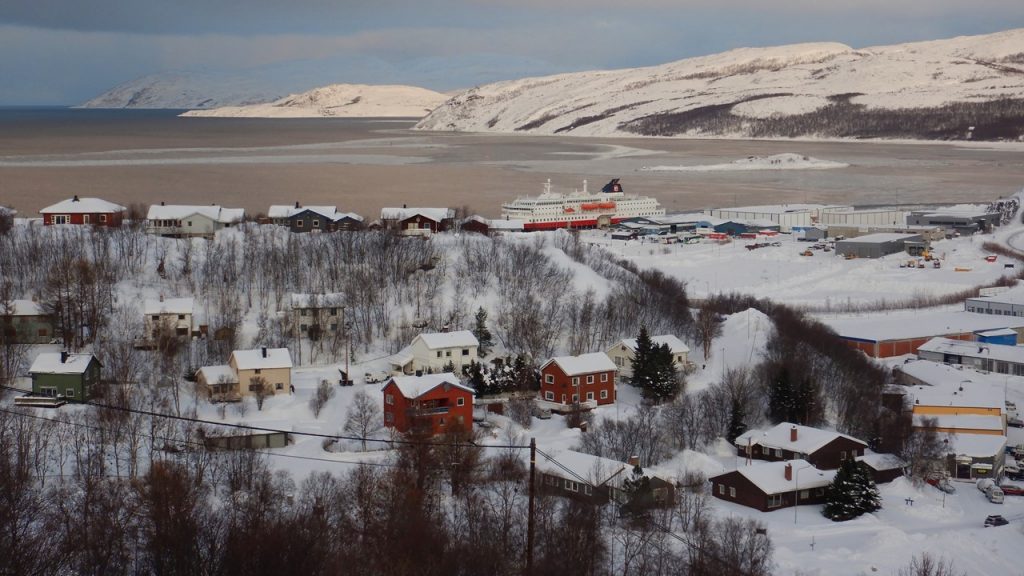




After lunch, we dock again in Vardo, and this time we have time to disembark and briefly explore the town. Vardo is the administrative capital of Finmark, and most of the people here are taught to speak Finnish. The town was completely destroyed in WWII, and like much of Norway, was rebuilt with great assistance from the US Marshal Plan. Today, the town of 70,000 make a living on fishing and public administration. After our walking tour, we re-board the ship, enjoy a dinner of reindeer, and make plans for the evening and Julie’s late-night snowmobile adventure. In preparation, she goes to bed early, but Rocky stays up and is rewarded with a modest display of the Northern Lights. Unfortunately, the 4-5-meter waves make taking pictures on deck difficult, and by the time we get back to Berlevag, the clouds have retaken to night sky and the show is over.
